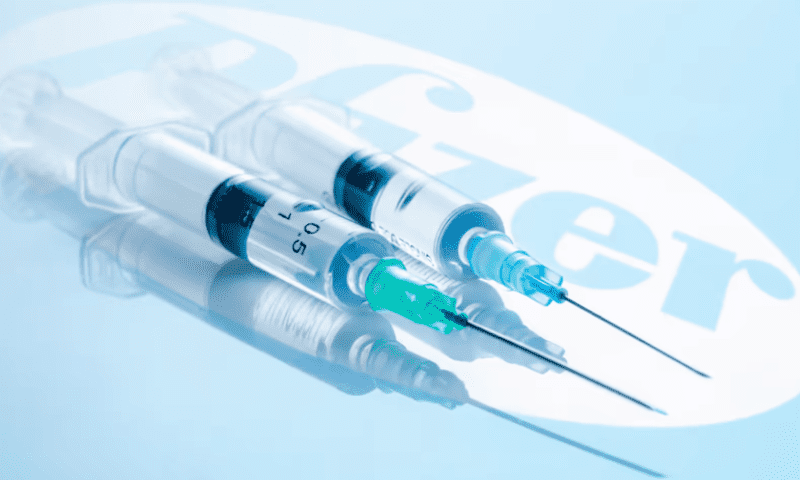The variant-adapted COVID-19 vaccine updates are now coming thick and fast. Days after Moderna and Sanofi shared data, Pfizer and BioNTech have stepped into the limelight with immune response results for their monovalent and bivalent omicron-adapted mRNA vaccines.
Pfizer, having run a much smaller study than Sanofi and GSK, is yet to gather efficacy data on either of its omicron-adapted vaccines but now has immune response results to inform its talks with international and U.S. regulators this week. Like Moderna’s data, Pfizer’s analysis covers neutralizing antibody activity against omicron.
The data come from a phase 2/3 clinical trial that gave 30-microgram and 60-microgram booster doses of the monovalent and bivalent vaccine candidates to 1,234 participants aged 56 years and older. All the doses met the pre-specified criterion for superiority, defined as the ratio of neutralizing geometric mean titers (GMR) with the lower bound of the 95% confidence interval above one.
The monovalent vaccine candidate achieved the best results, with the GMRs compared to the current jab coming in at 2.23 and 3.15, respectively, for the 30-µg and 60-µg doses. Because the lower bounds of the 95% confidence intervals for the 30-µg and 60-µg shots were 1.65 and 2.38, respectively, both doses cleared the 1.5 GMR level needed to show “super” superiority.
Pfizer’s bivalent vaccine fared worse, with neither dose meeting the bar for super superiority. Even so, the GMRs of 1.56 for the 30-µg dose and 1.97 for the 60-µg shot were enough to bring the lower bound of the confidence interval above the pre-specified criterion for superiority.
The divergent performance of the monovalent and bivalent vaccines was evident in an analysis of levels of neutralizing geometric mean titers (GMTs) against omicron BA.1 one month after dosing. The 30-µg and 60-µg monovalent vaccine candidates, respectively, increased GMTs versus BA.1 by 13.5-fold and 19.6-fold above pre-booster dose levels. The bivalent jabs triggered 9.1- and 10.9-fold increases.
One problem for Pfizer and Moderna is the virus has continued to evolve since they began work on their omicron-adapted vaccines. The Centers for Disease Control and Prevention estimates that forms of BA.1 accounted for 0% of U.S. COVID-19 cases by mid-June. The sublineage was supplanted by forms of BA.2, which is itself now losing ground to BA.4 and BA.5.
With BA.4 and BA.5 making up 35% of U.S. cases and rising, the omicron-adapted vaccines will need to perform against those sublineages. In a SARS-CoV-2 live virus neutralization assay, Pfizer found sera from trial participants neutralized BA.4/BA.5 with titers approximately threefold lower than BA.1. Moderna also reported neutralizing titers against BA.4/BA.5 that were approximately threefold lower than against BA.1. The rise of BA.4 and BA.5 could spur further adaptation of the vaccines.
“Omicron has newly evolving sublineages that have outcompeted BA.1 and exhibit a trend of increasing potential for immune escape. We will therefore remain vigilant and are prepared to rapidly adapt our omicron-adapted vaccine candidates to emerging sublineages if epidemiological and laboratory data suggest,” BioNTech CEO Ugur Sahin said in a statement.
Experts will meet this week to discuss what all of the data on variant-adapted vaccines mean for fall vaccination programs. The FDA’s Vaccines and Related Biological Products Advisory Committee is set to meet Tuesday and, with the input of speakers from Pfizer and other organizations, talk about whether it is necessary to change the current vaccine strain composition. Talks with the International Coalition of Medicines Regulatory Authorities are scheduled for later in the week.
Pfizer and BioNTech plan to pursue approvals in regions where they brought their first COVID-19 vaccine, Comirnaty, to market. The demonstration of superiority versus omicron and the confirmation of safety put the partners in a position to meet the regulatory requirements.

